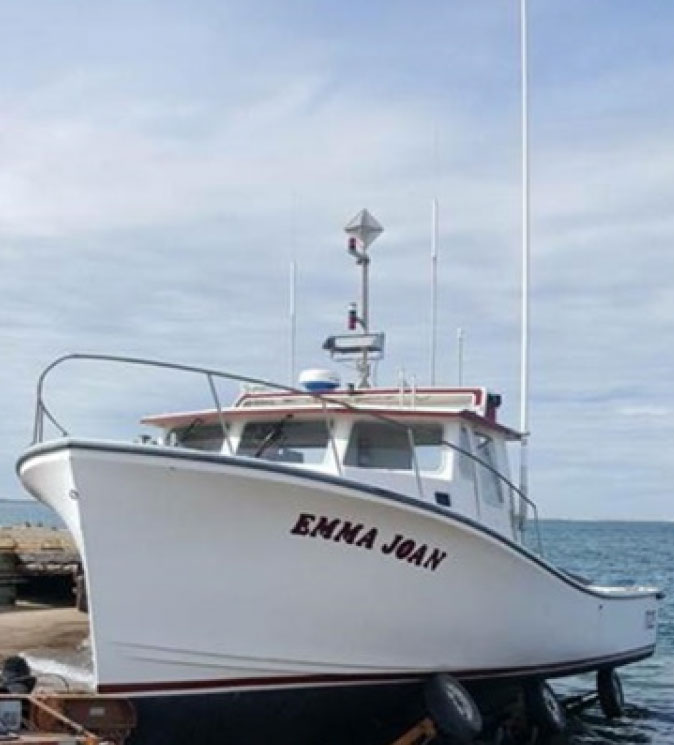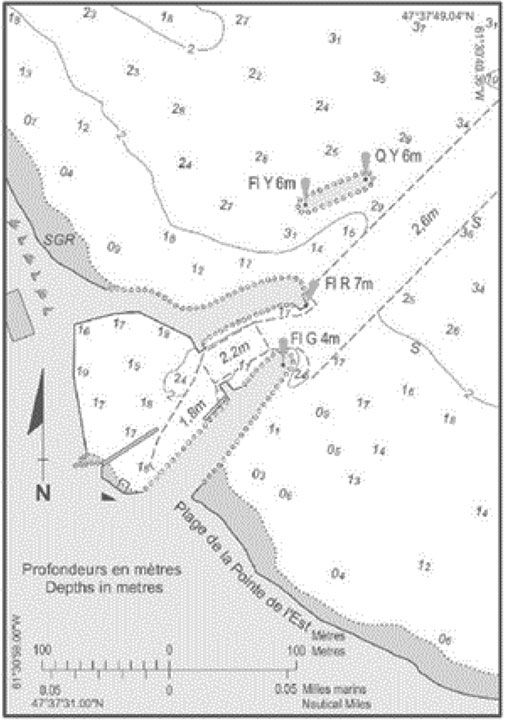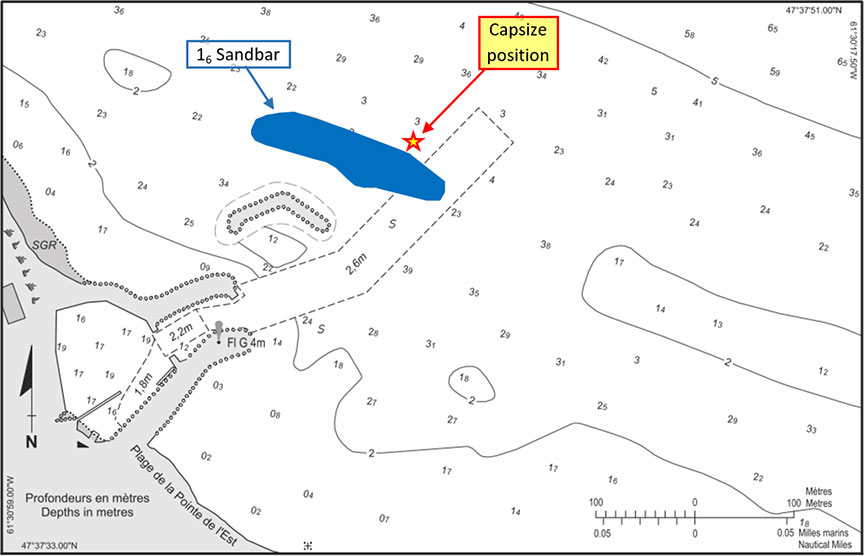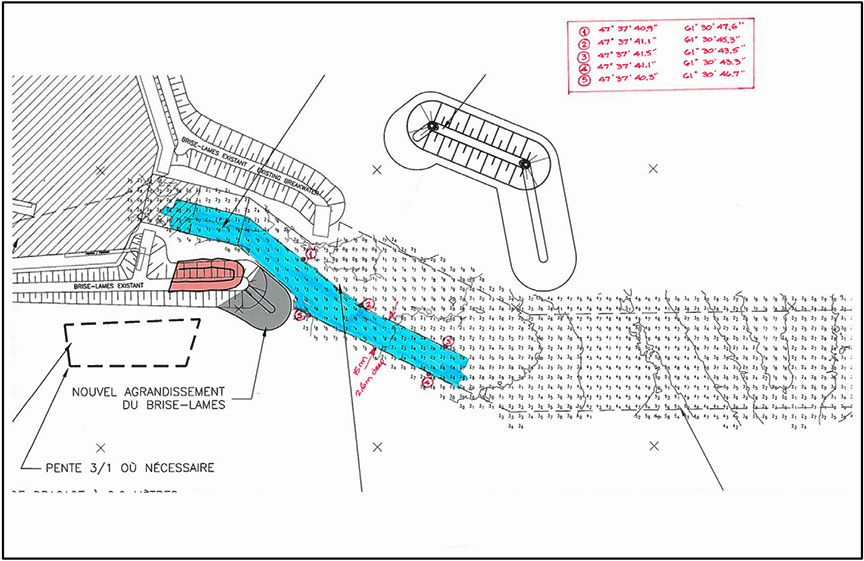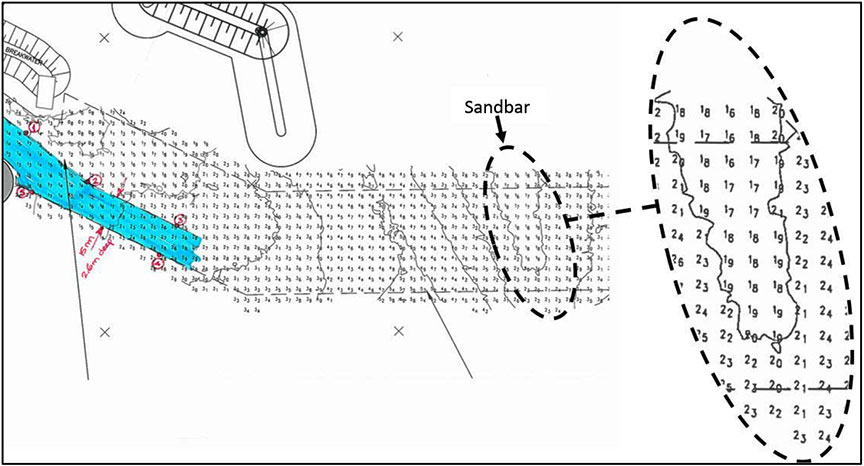Capsizing
Small fishing vessel Emma Joan
Grosse-Île, Îles-de-la-Madeleine, Quebec
The Transportation Safety Board of Canada (TSB) investigated this occurrence for the purpose of advancing transportation safety. It is not the function of the Board to assign fault or determine civil or criminal liability. This report is not created for use in the context of legal, disciplinary or other proceedings. See Ownership and use of content. Masculine pronouns and position titles may be used to signify all genders to comply with the Canadian Transportation Accident Investigation and Safety Board Act (S.C. 1989, c. 3).
History of the voyage
At 0600Footnote 1 on 20 May 2017, the 12.27 m (40 foot) fibreglass fishing vessel Emma Joan (Figure 1) departed the wharf at Grosse-Île, Îles-de-la-Madeleine, Quebec, with 2 people on board, to haul lobster traps. The master held a Small Vessel Operator Proficiency training certificate. He had been owner/master of the occurrence vessel for 8 years and had fished from this wharf for the past 4 years.
The 9-week-long local lobster fishery opens annually on or around the first Saturday of May, depending on the ice and weather conditions and dredging operations. In 2017, strong winds delayed the opening until 14 May. Prior to the day of the occurrence, the master had made 8 return trips from Grosse-Île to the fishing ground since the season opened.
The master's normal practice was to depart Grosse-Île at 0330 (in darkness). However, on the day of the occurrence, the master waited until daylight to depart in order to observe the sea conditions near the sandbar at the harbour entrance. The winds were 20 to 25 knots from the northwest with seas of 2 to 3 m when the Emma Joan departed Grosse-Île.
Around 1430, the crew finished hauling traps at the Rochers aux Oiseaux (Bird Rocks) and proceeded toward Grosse-Île, 19 nautical miles (nm) to the southwest. The master obtained a waypoint where another fisherman had successfully crossed the sandbar a few hours earlier; he plotted this waypoint and proceeded toward it.
Throughout the day, winds increased from the northwest to 35 knots and sea built to 3 to 5 m as forecast, further deteriorating conditions near the sandbar. At about 1540, as the vessel approached the sandbar, breaking seas were visible and the master and deckhand donned personal flotation devices. In preparation to cross the sandbar, the master altered course to port to take the seas on the stern.
At around 1555, a large wave lifted the vessel's stern up and the bow dropped into the preceding trough. The vessel's bow grounded on the sandbar and the stern continued to rise with the wave, causing the vessel to pitchpole.Footnote 2
The master and deckhand, both standing in the cabin, fell into the forecastle as the vessel pitchpoled. The vessel quickly capsized and trapped them under the overturned vessel.
No distress signal was issued, as there was no emergency position indicating radio beacon (EPIRB) or other automated method of distress signalling on board. There was no time to initiate a distress call manually using either the very high frequency (VHF) radiotelephone or the cellphone. The capsize was witnessed from shore and 2 fishing vessels quickly departed the wharf to rescue the 2 crew members.
The crew members eventually exited through the forecastle opening. The master surfaced near the capsized vessel; the deckhand surfaced inside the engine compartment. The deckhand then swam down through the engine compartment hatch opening and surfaced near the master.
The 2 fishing vessels arrived just before the master surfaced. A lifebuoy was thrown from one of the fishing vessels to them; both grabbed onto the lifebuoy and were pulled on board. Both crew members were taken to the wharf at Grosse-Île, where first responders treated them for hypothermia before transporting them to hospital. They received medical attention and were released later that day. The damaged vessel was recovered the following day (Figure 2). No pollution was reported.
Grosse-Île harbour
Approximately 45 fishing vessels operate out of Grosse-Île harbour. Navigation between the harbour and the sea is through an unmarked dredged channel that is 50 m wide and 415 m long. No buoys or other aids to navigation are used to mark the channel. In 2012, an offshore island breakwater was installed (Figure 3) and an extension was added in the fall of 2016. This extension required shifting the unmarked channel south of and parallel to its original location prior to the opening of the 2017 fishery (Figure 4).
Sailing directionsFootnote 3 issued by Fisheries and Oceans Canada (DFO) indicate that channel depths (figures 3 and 4) are obtained by routine dredging, and that, due to continual silting, mariners are cautioned that they may find less water than expected.
DFO manages and maintains harbours, including Grosse-Île harbour, to ensure they are safe and accessible to fishermen and other users through the Small Craft Harbours program.Footnote 4 Due to varying weather and sea conditions, the amount of silting and the prevalence of the sandbar in and around the channel fluctuate significantly from year to year. Therefore, DFO conducts annual depth surveys and dredging operations at Grosse-Île. Surveys conducted on behalf of DFO before the 2017 lobster season indicated that the sandbar ran across the new channel, reducing the water depth to only 1.6 m at the sandbar's highest point.Footnote 5
DFO hires a contractor for annual dredging at 5 harbours throughout Îles-de-la-Madeleine, including Grosse-Île. The full dredging of all 5 harbours is not completed during the short period of time between the melting of the sea ice and the opening of the lobster season; only a safety passage is dredged at each harbour to allow access to and from the harbour on opening day. Once the safety passages for all 5 harbours have been created, the contractor returns to each harbour to complete the dredging of its entire channel.
At the beginning of the 2017 season, a safety passage that was 2.6 m deep, 15 m wide, and 165 m long was dredged in the immediate vicinity of the wharf at Grosse-Île, but it did not extend to the sandbar near the seaward end of the new channel. No temporary buoys were placed to mark the narrow safety passage that had been created.
To provide information on the safety passage, on 02 May 2017, DFO issued a survey diagram (Figure 5) to the Harbour Authority of Grosse-Île for distribution to fishermen. The master of the Emma Joan received a copy of this diagram, which highlighted the safety passage and included 5 latitude and longitude coordinates marking the passage's extremities. The diagram indicated that the water depth in the new channel was 1.6 m at the sandbar's highest point, but its position was not highlighted and coordinates for its position were not given.
Prior to the start of the 2017 lobster season, DFO placed a temporary fishing gear marker buoy south of the sandbar to mark the hazard. The temporary buoy remained in place for 1 or 2 days before it was washed away. This temporary buoy was not in place at the time of the occurrence to identify the southern limit of the sandbar hazard.
Safety messages
The Transportation Safety Board of Canada has previously investigated occurrences involving sandbars in the approach to a harbour. In 1 occurrence, the specific location of a newly buoyed channel was not depicted on any chart or otherwise communicated to harbour users,Footnote 6 and in another occurrence, the extent of silting and the prevalence of a sandbar was not communicated to harbour users.Footnote 7
Although fishermen are responsible for assessing the risks posed by weather and sea conditions to ensure the safety of their vessels and crews, and caution should be exercised when transiting areas of continuous silting and shifting sand, an accurate assessment cannot be completed in the absence of information regarding navigational hazards and safe passages.
At Grosse-Île, considerable work was done to survey the unmarked channel and dredge a safety passage in the vicinity of the wharf before the start of the fishing season. Although the diagram provided to fishermen indicated the height of the sandbar, it did not highlight its location or provide its coordinates. Additionally, the temporary buoy placed to mark the sandbar until the channel was fully dredged washed away shortly after placement. In the absence of a clearly identified sandbar, fishermen may transit into hazard areas, endangering the safety of their vessels and crews.
This concludes the TSB's limited-scope investigation into this occurrence. The Board authorized the release of this investigation report on . It was officially released on .
